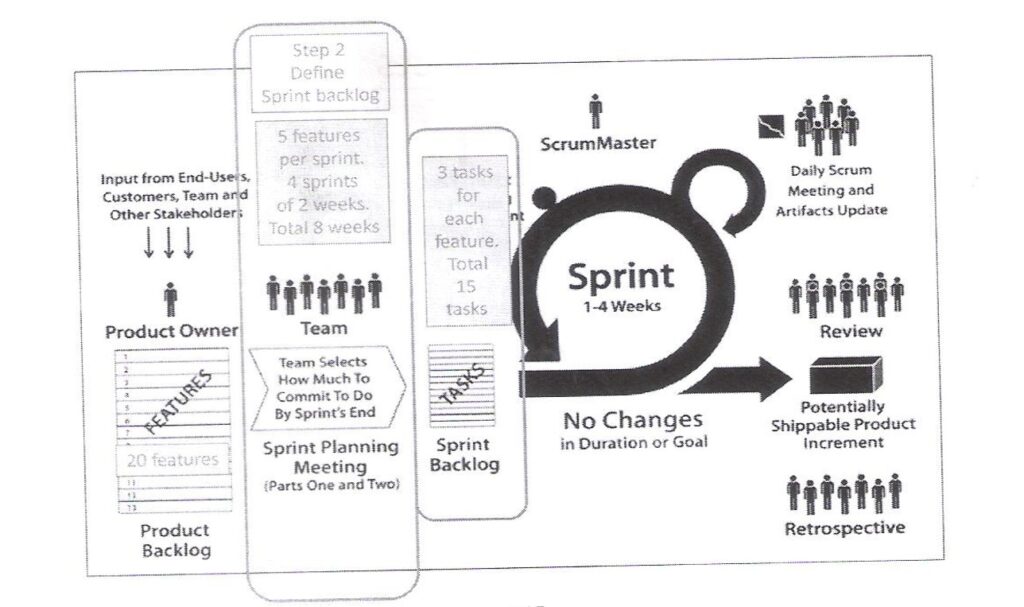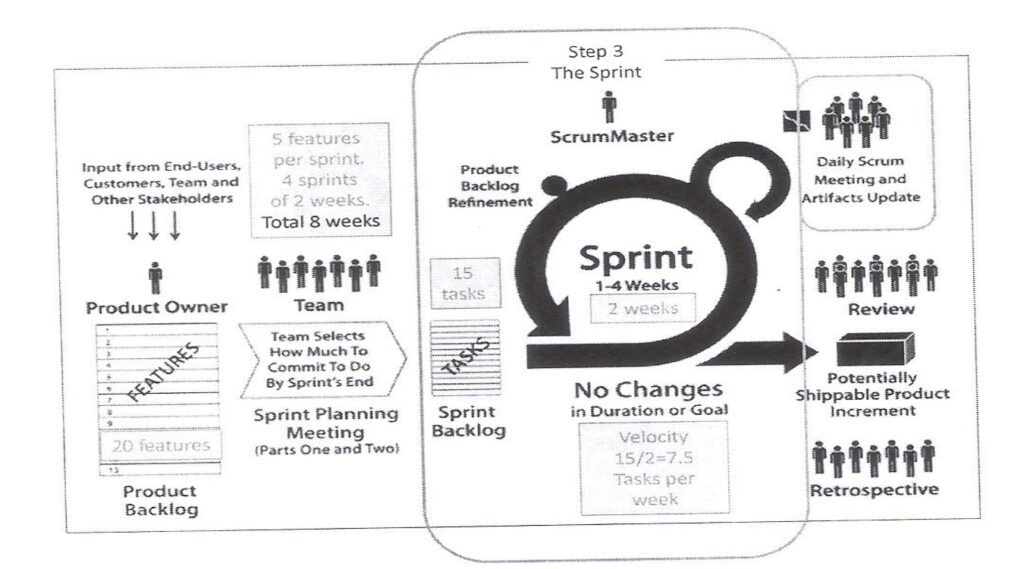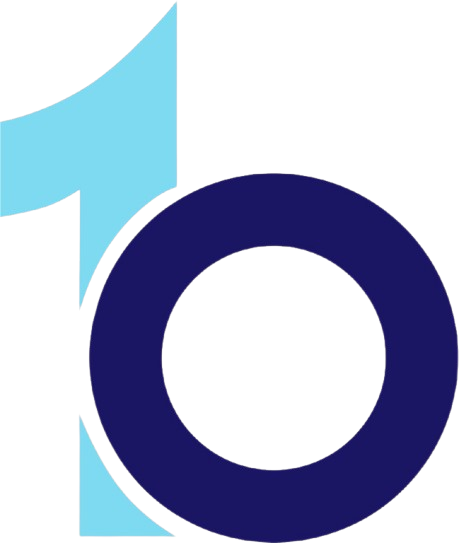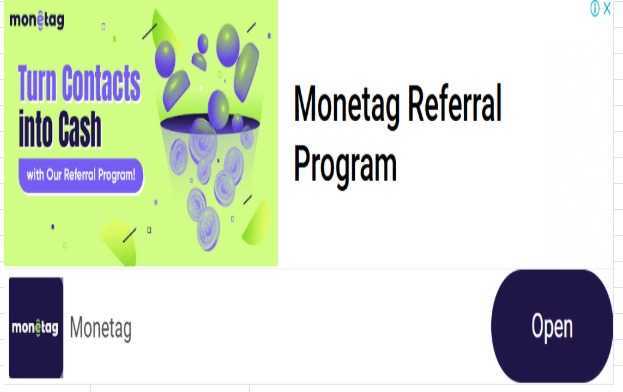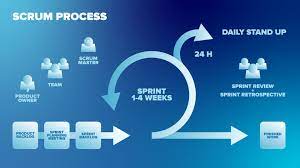- Scrum is an agile, lightweight process to manage and control development work
- Scrum is a wrapper for existing engineering practices that iteratively and incrementally develop system products when requirements are rapidly changing
- Scrum is a process that controls the chaos of conflicting interests and needs
- Scrum is a way to improve communications and maximize co- operation
- That’s the reason companies like IBM, Microsoft and Xerox successfully address the failings of software development Process through SCRUM
Focuses more on PM level for prioritization of
work and getting feedback
3 pillars of Scrum Methodology
1. Visibility
2. Inspection
3. Adaptation
Product Backlog
¤Owner: Product Owner (also responsible for “Grooming”)
¤Should be DEEP (Detailed Appropriately, Estimable, Emergent, Prioritized)
Sprint
¤Ideally 30 days
Planning Meeting (4+4 Hours)
¤First Half:
- PO discuss priorities.
- Team asks questions.
- Team picks items for sprint.
¤Second Half:
- Team maps sprint on task level
- Tasks to be completed are put in Sprint Backlog (owner: Team)
Daily Scrum
¤(Daily 15 Min)
- What you did since last meeting?
- What you are planning to do?
- What issues you are facing?
Sprint review
¤(4 hours – At end of sprint)
- Conducted by the Product Owner
- Attended by team and key stakeholders
- Purpose is to show new functionalists and discussing new features for next sprint
Sprint retrospective
¤(At the end of sprint and before start of next sprint)
¤Product Owner do not participate
¤Discuss Items:
- What went well? (Continue)
- What went wrong? (Change or Stop)
- What new? (Experiments and Additions)
Scrum Roles
- ¤Product Owner
- ¤Team
- ¤Scrum Master
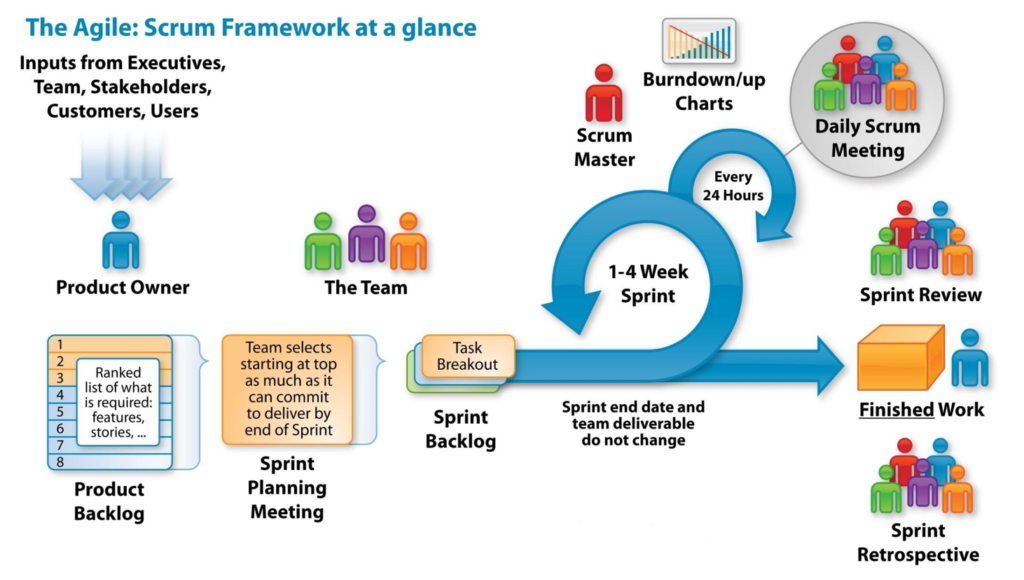
Scrum is a popular lightweight model, easy to understand.
Designed to delivery working software in short sprints
Has three roles, three ceremonies, and three artifacts
Roles: Product Owner, Scrum Master, Team;
Ceremonies: Spring Planning, Sprint Review, and Daily Scrum Meeting;
Artifacts: Product Backlog, Sprint Backlog, Burn down charts
Based on 3 pillars
Transparency: Gives visibility to all of the outcome
Inspection: Checks to look for problems & deviations
Adaption: Adjusting processes to reduce future issues
ROLES
Product owner – Responsible for managing the product backlog.
Scrum master – Servant leader to the development team. Responsible for removing impediments to progress
Team – Group of professional who build the product. The team is empowered to manage its own work.
CEREMONIES
Sprint planning meeting – Done to determine what is to be delivered in the scrum
Sprint Review –
Daily Scrum – 15 minute time boxed meeting
- What has been done since last meeting
- What will be done before the next meeting
- What are the impediments
Product Owner
- Product owner decides what will be built and in which order i.e.; grooms the product backlog
- Defines the features of the product or desired outcomes in form of releases of the project and chooses release date of releases and content for qualifying for being potentially shippable commodity after the release
- Ensures profitability (ROI) as being custodian for the customer and prioritizes features according to market value and helps in finalizing Minimally Marketable Functionality
- Adjusts initially and re-adjusts features, combination of features, releases, etc. and their subsequent priority as and when needed
- Accepts or rejects work results during demo ceremony & facilitates scrum planning ceremony
Scrum Master
- Scrum Master is a facilitative team leader who ensures that the team adheres to its chosen process & also ensures eradication of obstacles
- Ensures full functionality and productivity of team & Enables close cooperation across all roles and functions; Shields the team from external interferences.
- Ensures that the process is followed, all ceremonies are appropriately staged and conducted including issuing invitations to daily scrum, sprint reviews/demo and sprint planning meetings
- Facilitates the daily scrums and scrum of scrums if there is big team
- Ensures open, candid and participative environment during retrospective meeting to extract maximum benefit in form of process improvement and the lessons learnt
Team
- Team should be generalist i.e.; cross-functional
- Team’s appropriate size is suggested to be seven plus or minus two individuals; often splits the team if more than nine individuals and conduct scrum of scrums
- Team is self-organized and self-motivated and it selects for its own sprint goals and also specifies its work results
- Team generally does not pledges for velocity more than their previous spring & team should be innovative to look for all practical options to achieve their goals within specified project guidelines
- Team demonstrates its work results to the product owner and then goes for their internal retrospective along with the Scrum Master
SPRINT PLANNING
- Takes place at start of each sprint
- Team meets with the product owner and discusses next stage of the project by setting highest priority items from the product backlog
- The second part of the sprint planning meeting results in converting this recently prioritized sprint backlog (by the consent of product owner) into tasks with explicit estimate for each task and the volunteer responsible person
- Team also agrees with the product owner on the sprint goal and test driven protocols
- The probable shippable deliverable commitment coming from the team is generally based on the teams known velocity and their precedence history
SPRINT REVIEW
- Takes place at the end of each sprint demonstrating functionality to product owners and to those who are interested
- Team meet with the product owner and demonstrate the working software produced during the recent sprint
- Gives opportunity to team and product owner and product owner to inspect and adapt the product
PETROSPECTIVE
- Occurs at the closing stage of each sprint after demo
- Team now meets with its Scrum Master and looks retrospectively at what went well and what went wrong in the previous sprint and what can be Improved and how it can be improved
- Individual actions are taken or assigned for futuristic improvement of the process
SPRINT REVIEW
- Takes place at the end of each sprint demonstrating functionality to product owners and to those who are interested
- Team meet with the product owner and demonstrate the working software produced during the recent sprint
- Gives opportunity to team and product owner and product owner to inspect and adapt the product
PETROSPECTIVE
- Occurs at the closing stage of each sprint after demo
- Team now meets with its Scrum Master and looks retrospectively at what went well and what went wrong in the previous sprint and what can be Improved and how it can be improved
- Individual actions are taken or assigned for futuristic improvement of the process
DAILY SCRUM
- Team meets for a maximum of 15 minutes per day with the Scrum Master around the team task board
- Team members update the task board
- Team also aligns itself with one another on tasks
- Team answers the following three questions
- What has the team member done in the last 24 hours?
- What will he be doing in the next 24 hours?
- What might be the probable obstacles for his recent activity?
PRODUCT BACKLOG
- Prioritized by Product Owner and divided into Release (grouping of features which should go together as per business requirement and customer’s suggestion)
- Product backlog should be appropriately Detailed, Estimable, Emergent & Prioritized (DEEP)
SPRINT BACKLOG
- Stories that the team plans to take up in the upcoming sprint are placed here
BURNDOWN CHARTS
- Chart used to communicate progress during or end of sprint; As the project progresses the burn down chart also burns downs (melts).
PRODUCT BACKLOG
- Prioritized by Product Owner and divided into Release (grouping of features which should go together as per business requirement and customer’s suggestion)
- Product backlog should be appropriately Detailed, Estimable, Emergent & Prioritized (DEEP)
SPRINT BACKLOG
- Stories that the team plans to take up in the upcoming sprint are placed here
BURNDOWN CHARTS
- Chart used to communicate progress during or end of sprint; As the project progresses the burn down chart also burns downs (melts).





